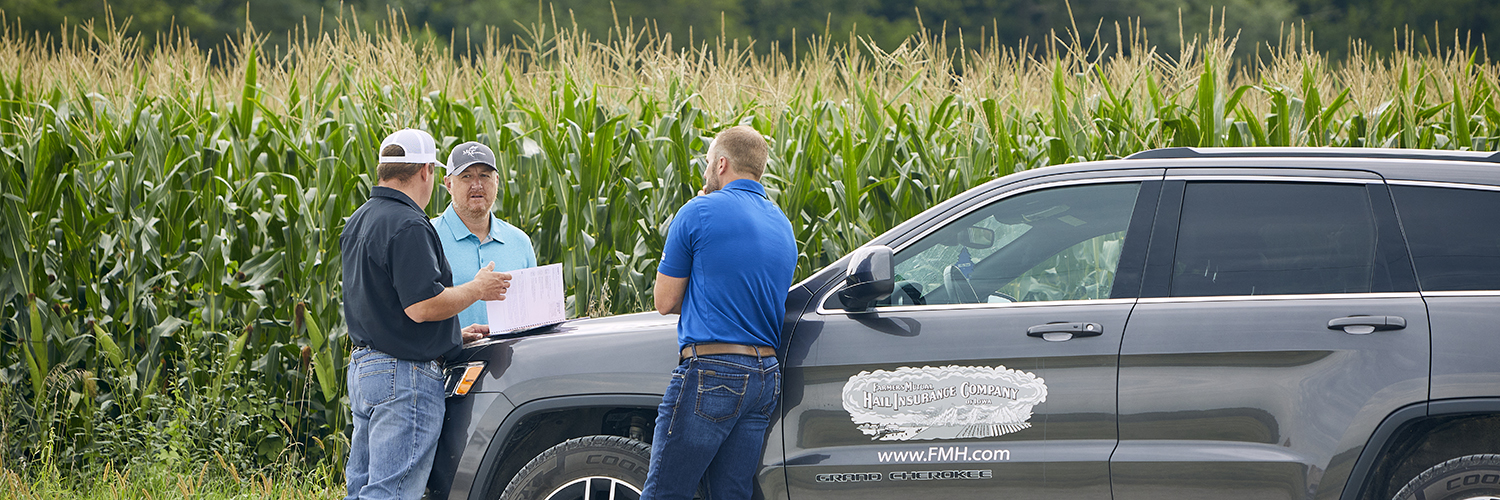For this Q&A, PTS Evan Harbert interviewed his fellow teammates to discuss the ins and outs of helping agents and producers use their precision data for crop insurance. FMH's team of specialists focus only on assisting agents and farmers with Precision Solutions, a support system unique to FMH.
WHAT DOES A TYPICAL DAY FOR A PTS LOOK LIKE?
Branden: It’s very seasonal. We just came out of acreage reporting, which is a busy time for all of us at the computer. We’ve really started to switch gears the past several months getting into the harvest conversation, talking silage. I get busy traveling after harvest through planting for those prospecting months to bring on new agents and talk expectations with farmers.
Patrick: A typical day for a PTS really varies by where everybody is at. A typical day for me is in my home office. When I do get out on the road, a typical day is a lot of windshield time, and trying to get as many visits as I possibly can with agents and get them set up. Also, trying to go visit farmers if I can, and trying to do follow-ups went I get back into my home office.
HOW OFTEN DO YOU WORK DIRECTLY WITH THE FARMER AND THE AGENT?
Marc: Primarily, we visit more with agents. It goes back to seasonality. When we’re out of acreage or production reporting, we try to get there and meet with the agent in person at their office. If we can, we try to schedule some visits with their farmers that are using precision too. As we get back into the home office, we do a lot of work on the phone and meet virtually through Zoom or TeamViewer.
Cole: I work mostly with the agent and have several who are interested in having me work directly with the farmer. A lot of that is done over the phone.
WHAT’S THE BEST PLACE TO GRAB LUNCH WHEN YOU’RE OUT ON THE ROAD?
Branden: I can’t name just one restaurant — pretty much it’s just any small-town restaurant and their daily special. That’s something I picked up when I started out adjusting and riding around with our adjusters. They would take me to some pretty good spots.
WHAT IS SOME OF THE BEST FEEDBACK YOU RECEIVED FROM AN AGENT OR INSURED WHO USED THE PRECISION SOLUTIONS PROCESS FOR THE FIRST TIME?
Joe: I worked with an agent this year who used the Precision Solutions process for the first time. The best thing she said — after it was all said and done — was how simple it was from what she normally did. She was a little worried about getting into precision because it’s a new process for her, but with support from FMH, it was a lot easier than what she thought it would be.
WHAT’S THE MOST COMPLICATED PART OF IMPLEMENTING PRECISION? AND THE EASIEST?
Patrick: One of the most complicated things is changing the mentality of acreage or production reporting. For many years with acreage reporting, we told people, “You need to have 578’s [FSA crop acreage reports].” So, people got used to that. Then we offered this new thing and tell them, “We can use this, you don’t need 578’s anymore.”
Changing that mindset and getting everyone onboard has been one of the most complicated things. The easiest part though is talking about saving acres and money for the farmer; they jump at the idea.
